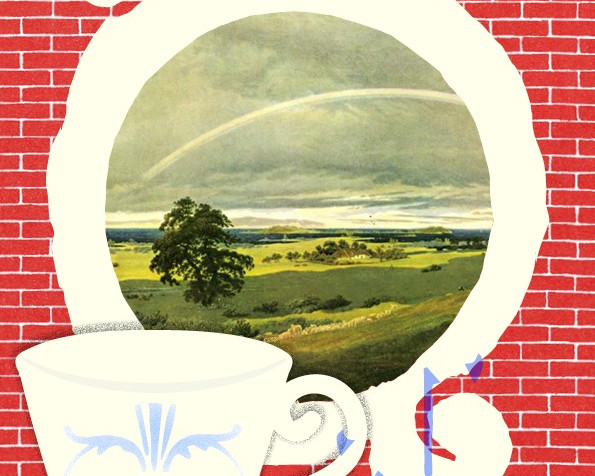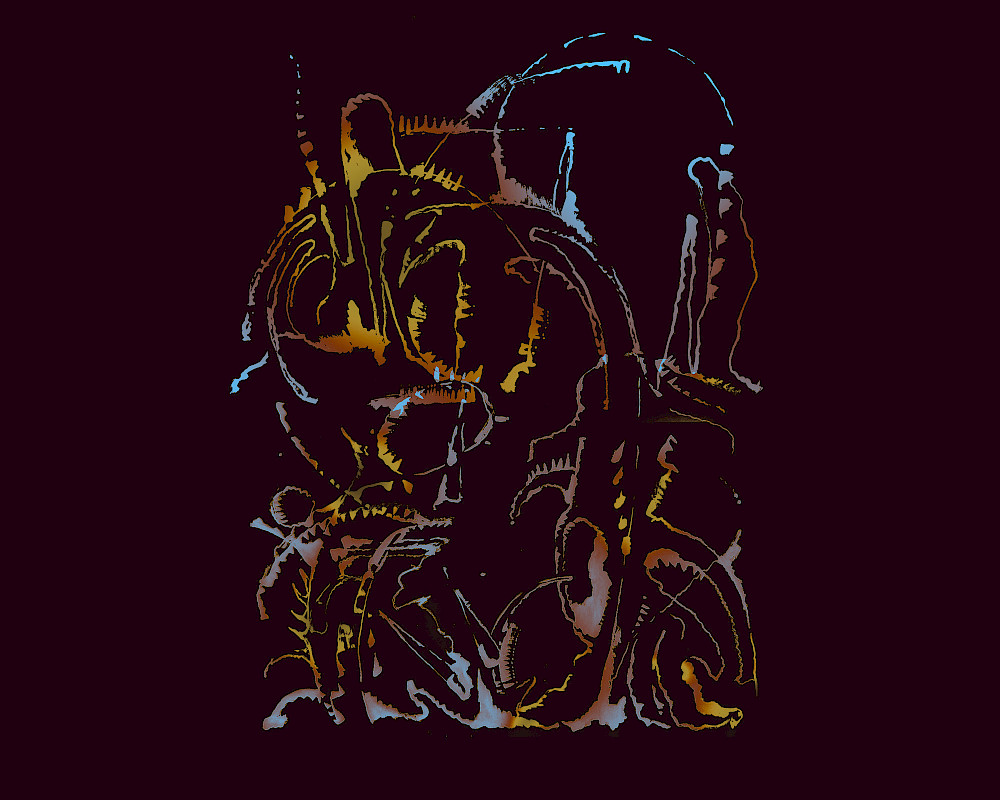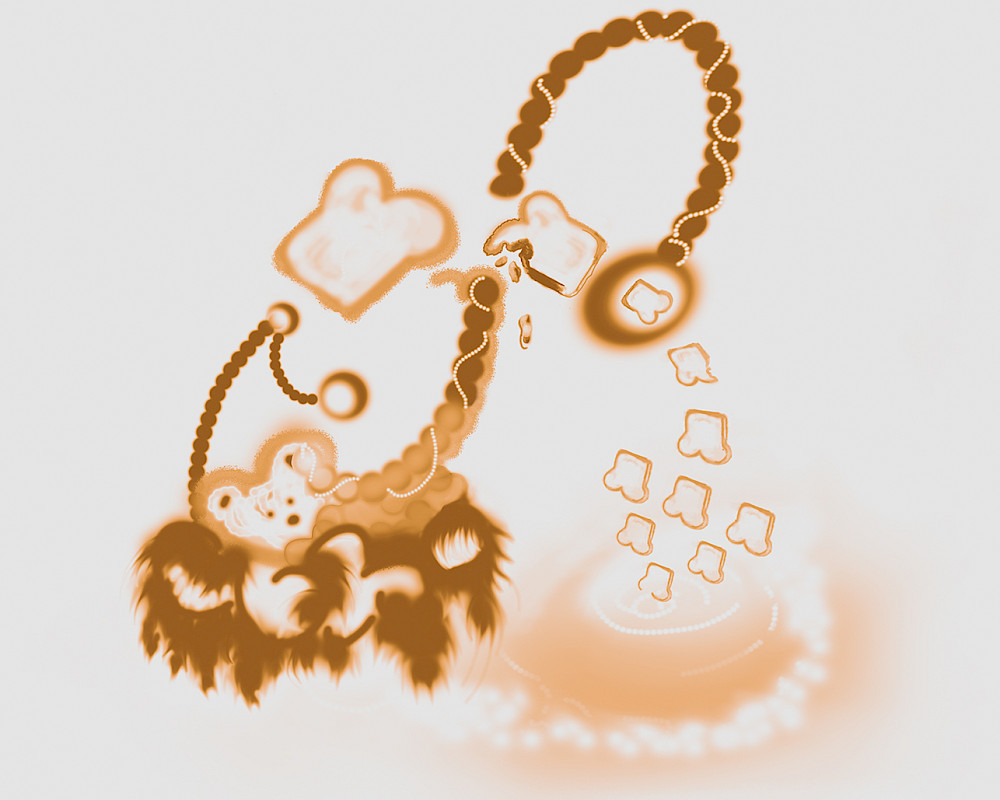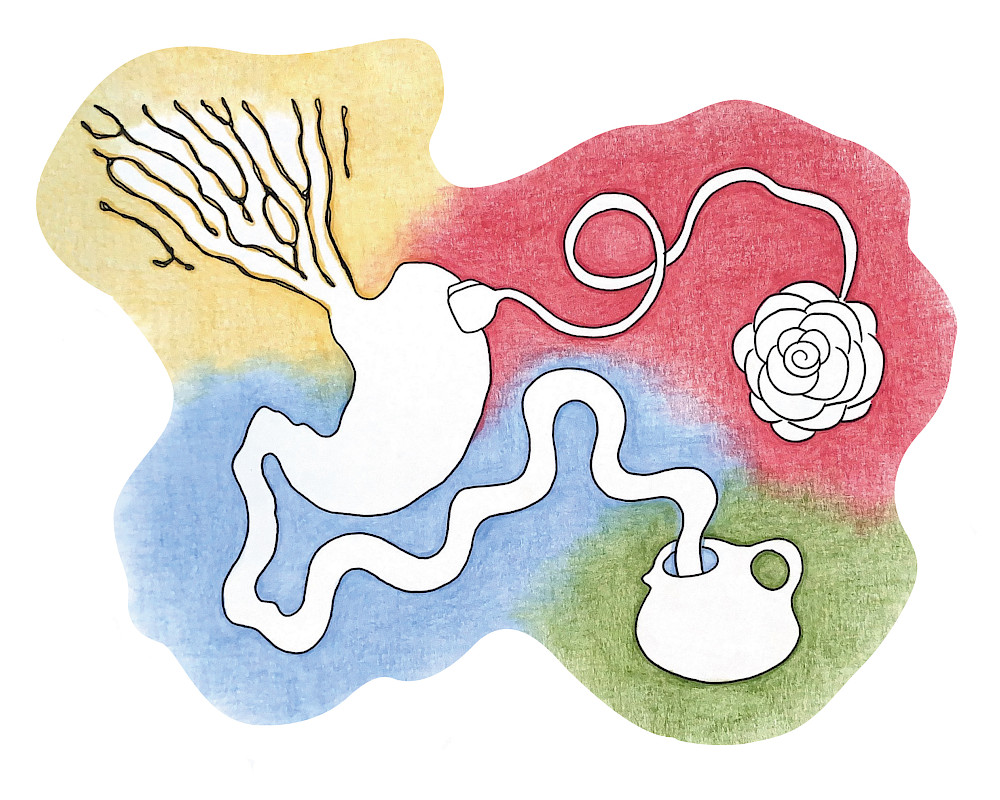essay
Traces of past lives: an attempt at capturing balloons
Iris Cuppen
Iris Cuppen (1991) studied graphic design, but spends her time writing. Essays, most of all. On GIFs, dancing bodies, and as of late, oranges. Her written work has appeared in The European Review of Books and Hard//Hoofd. She lives in Rotterdam.
Martin Groch
Martin Groch is a Slovakian graphic designer and illustrator bassed in Brussels. His work merges type, image, and abstract forms.
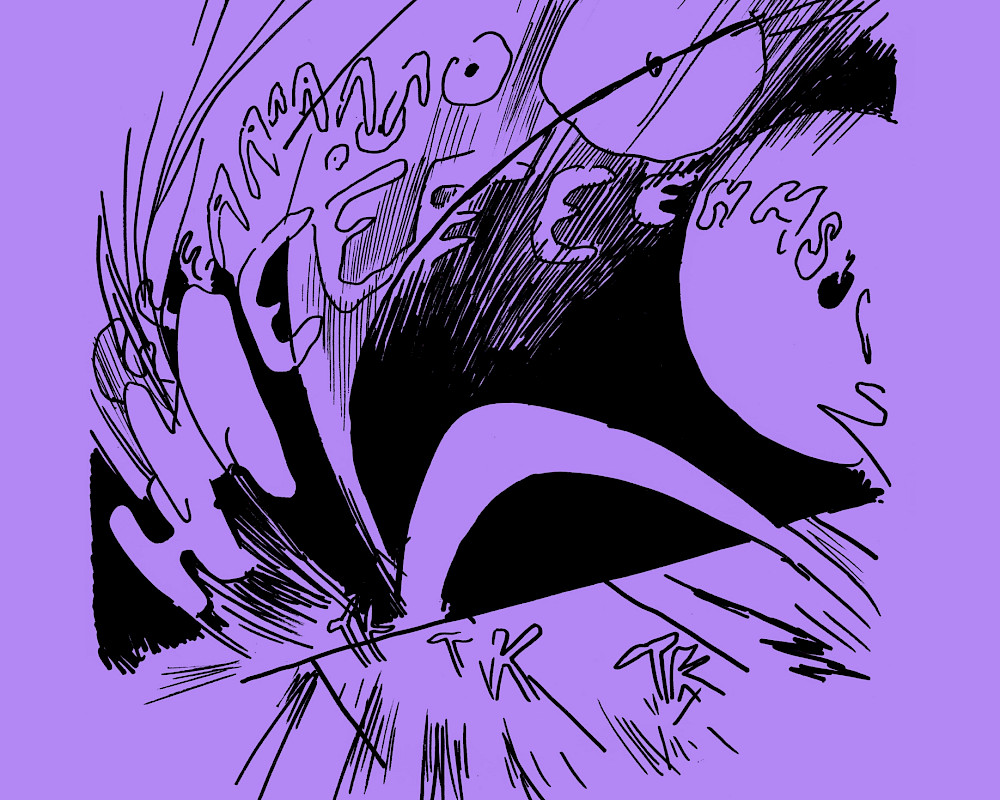
fiction
Full Nine Seconds
Bug wondered if any part of him, any itty-bitty projection of his future self, had objected to the goings-on during the fall and wished to rewind in midair.
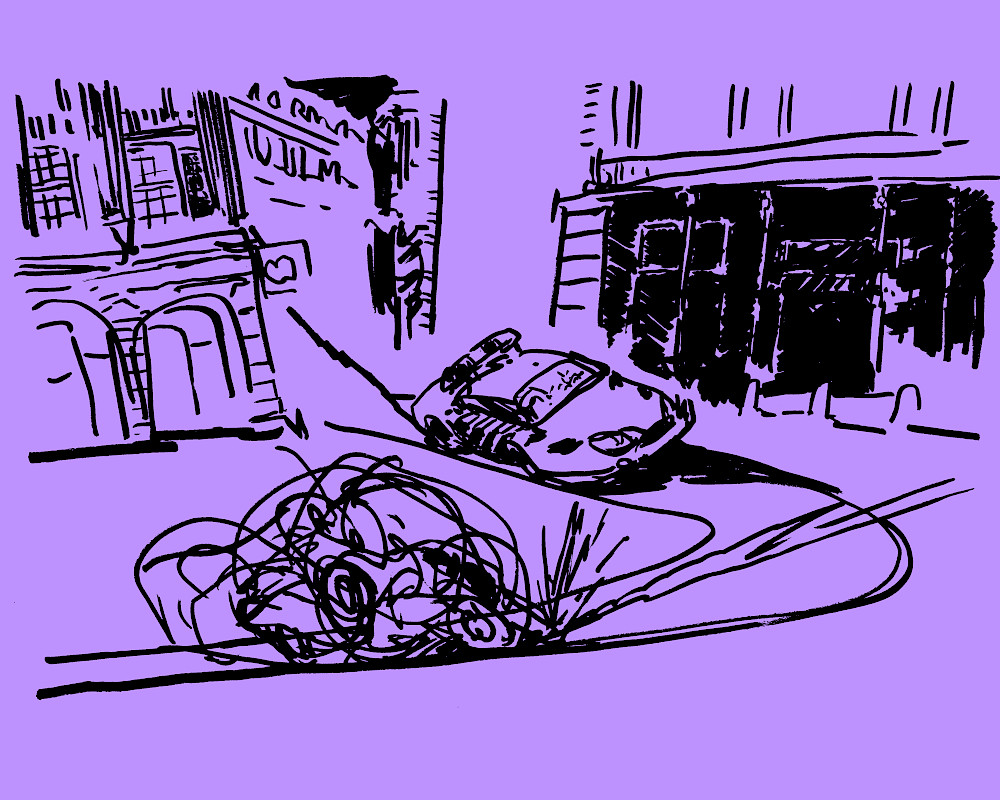
fiction
The Glass Age
Suddenly, a muffled bang pierced the room. It travelled over the aisles in a shock wave, coating the walls in a shallow echo. A thick silence followed, cut only by the hiss of the refrigerators.
15
min read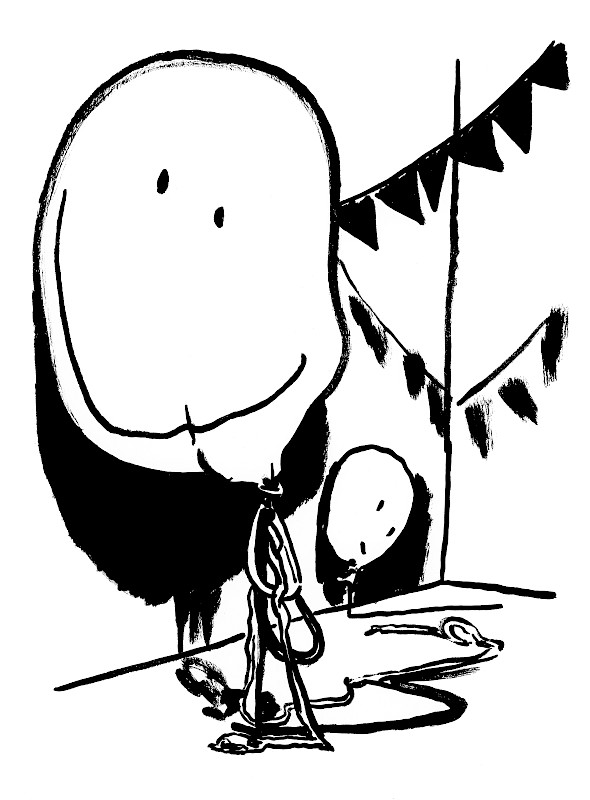
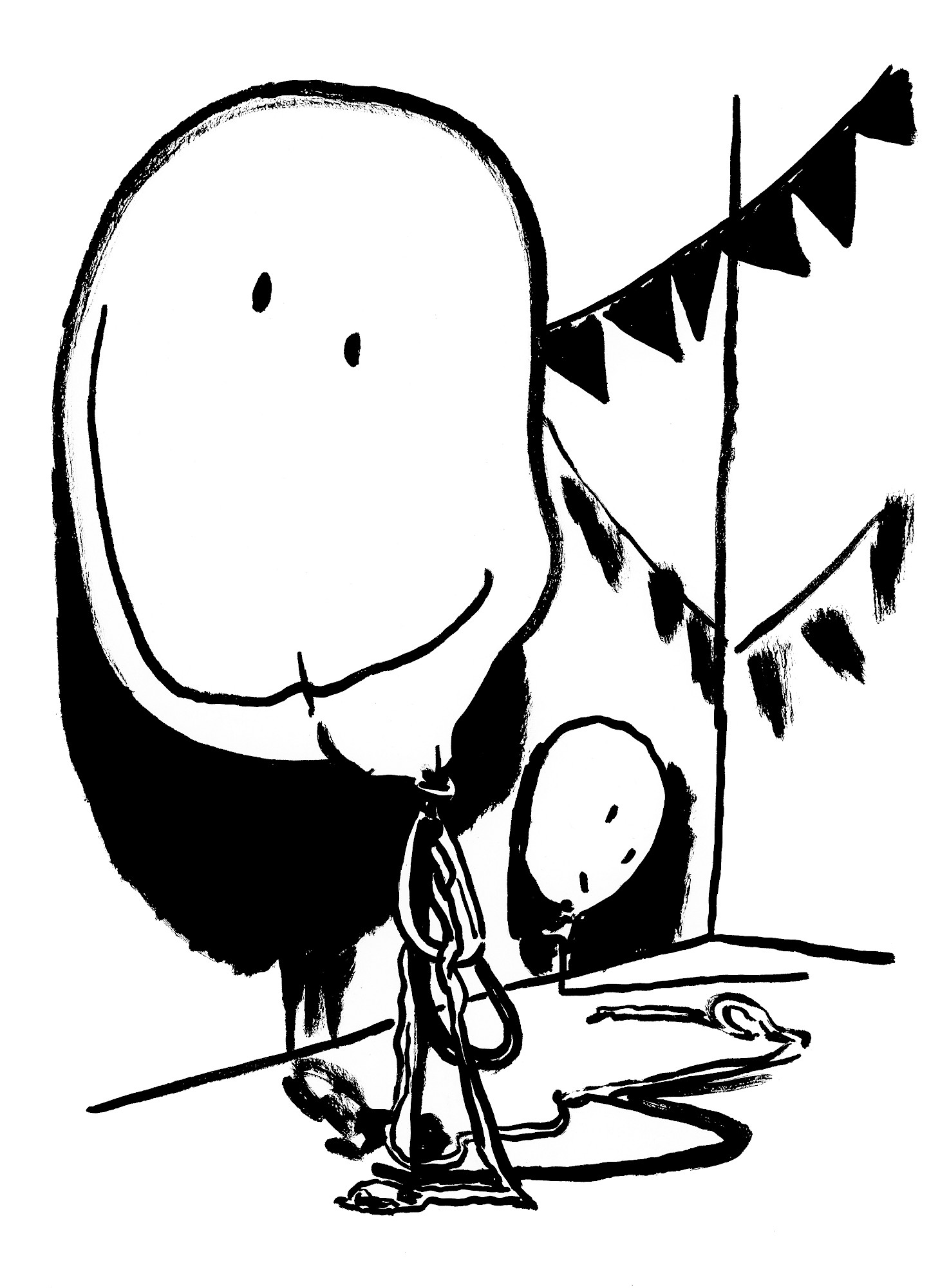
2023. The United States military shoots a swirling mass of objects down over its territorial waters. First, a large object identified as a Chinese surveillance balloon, followed by three smaller objects that were classified as potentially “benign”. The unmanned inflatables were moving across an airspace that is increasingly crowded with objects that look just like it. The “2023 Chinese balloon incident”, as it’s called on Wikipedia [1], prompted the army to meticulously scour the skies for balloons. While military balloons have a long and winding history, they slowly disappeared from the radars. In an interview with NPR [2], Congressman Jim Himes of the House Intelligence Committee said:
There is an immense amount of garbage up there, all kinds of balloons. (...) None of our technology was particularly focused on predicting something that's drifting along at 30 miles an hour at 50,000 feet. Now it is. (...) I think we were all attuned to balloons and being slightly frightened by balloons .
While the fear of balloons is an actual phobia—globophobia to be exact—this interview speaks to a different type of fear. It was not the proximity of balloons, their smell, sound, or texture, that frightened the intelligence committee, but the inability to tie the balloon down to one particular species. This seemingly guileless object had somehow escaped the logic of the sophisticated technologies that were invented to follow, analyse and predict the tracks, the origin stories, of flying objects. After the incident, more balloons were taken down from the skies, but their remains had no stories to tell. They turned out to be ambiguous objects, harder to grasp, read or keep than most human-made things up there.
Weather balloons, WiFi-balloons, superpressure balloons. Foil balloons with happy faces that have somehow escaped the clutches of crying children. Our skies are filled with balloons. Amidst planes, satellites and rockets that are made of industrial, hard materials like titanium, steel and aluminium, they slowly drift, buoyed by gases lighter than air. Flying right over our heads, most of them go by unnoticed. Out of sight, they monitor atmospheric pressure changes and air pollution levels or gather intelligence from military sites. Others are sent into the heavens to commemorate the dead, before becoming a menace to living things back on earth. After being released above open fields, city skylines, and parking lots, most balloons return to the land as shadows of their former selves, killing animals, polluting beaches, and causing power outages as they go. What happens in between is hard to pin down. Balloons live many lives, but we’re only privy to glimpses of them.
Looking at online images of balloons, I think of a friend of mine and how he used to create invisible balloons out of thin air when we first started to hang out. He would make a fist close to his chest, as if holding a balloon string, before handing it to me whenever words seemed to fall short. He made these imaginary balloons to mark cringe-worthy moments, or moments that made us both feel shy. I used to carry them with me long after the ritual had taken place. I cherished them, as they symbolised our mutual decision to not spend words on a shared moment. Instead, we had found a way to let it float between us, before allowing it to become part of us. As if, when we are dead, you could cut us open, and find these balloons still intact. If I would tell this friend that I’ve been writing about balloons, he would probably laugh and hand me a new one. While crafting this essay, a literal attempt to capture balloons in words, I kept on coming back to the same question: can I write about the balloon without attaching too much weight to it? Or is a balloon just a balloon; enough said?
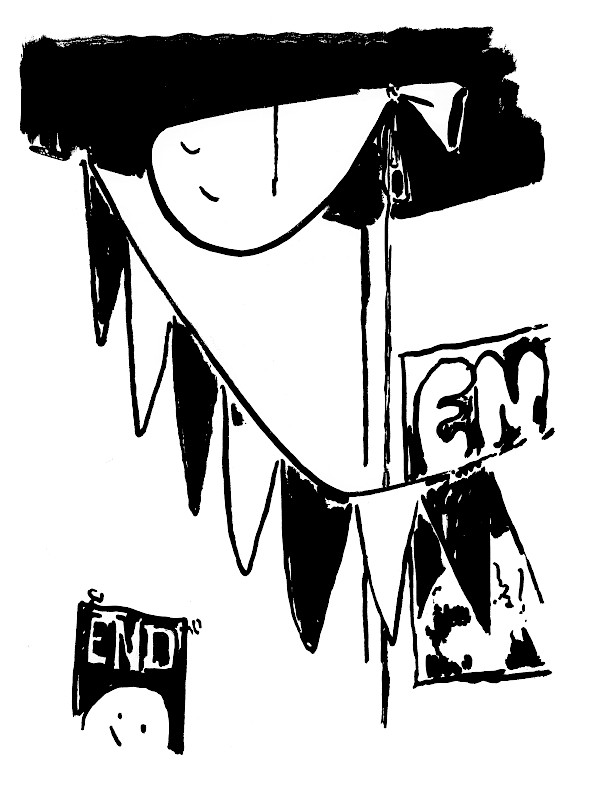
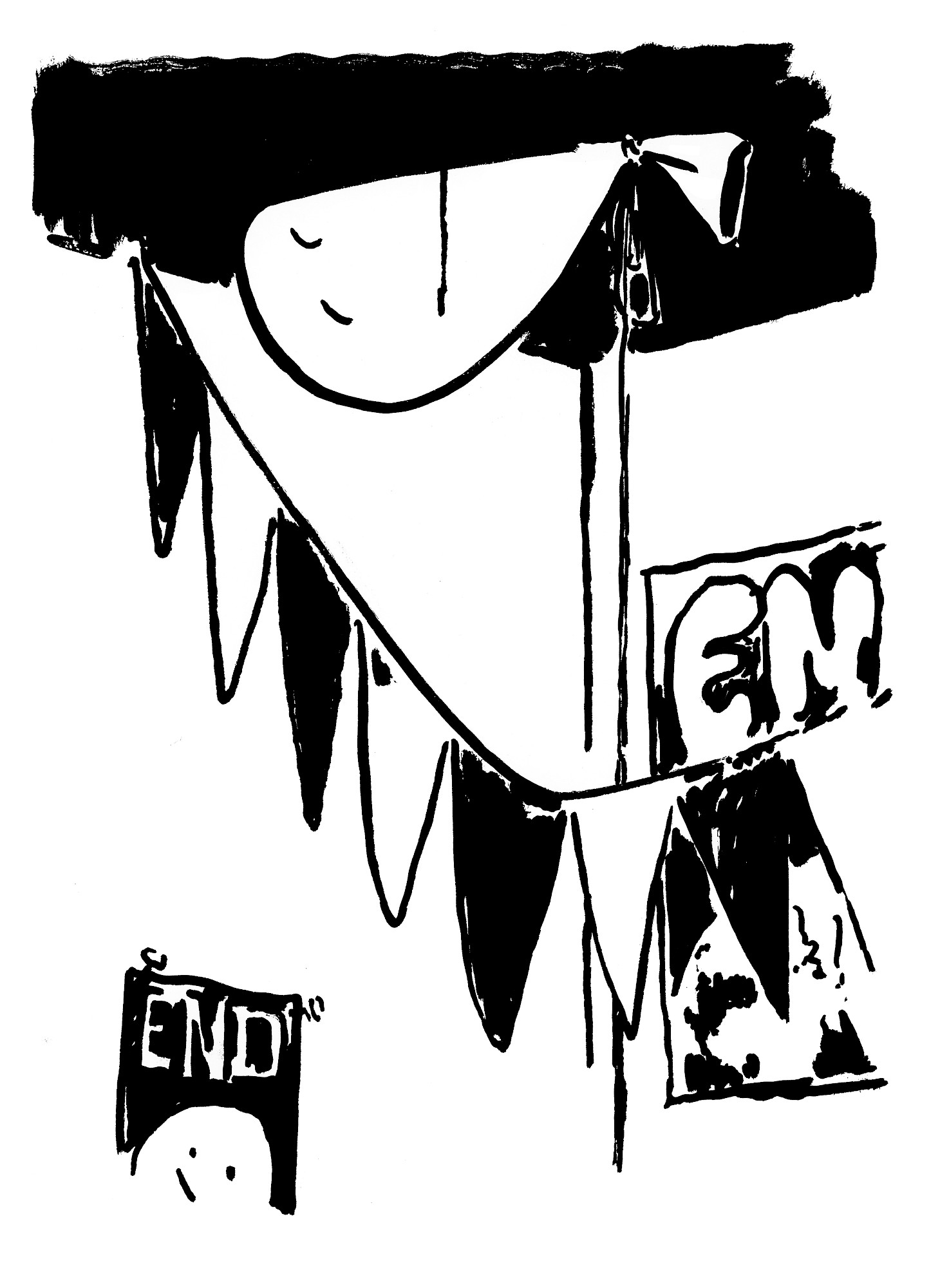
Let’s start with the description of the object itself. Originally crafted from animal bladders—from cats, pigs, and sea mammals—the balloon has been used for many purposes: as a sacrifice to the sun gods by the Aztecs, as a vessel for storing and transporting wine by ancient Romans, as a means for mediaeval court jesters to entertain their royal employers, as a scientific tool for measuring the weight of air by Galileo Galilei, and as a symbol of freedom and the declining monarchy by French revolutionists. Nowadays, balloons are typically made of rubber, latex, and foil, filled with helium, hydrogen, or human breath, and mostly used for providing colour to parties, parades and other festive gatherings, where they occasionally become animals again in the hands of grinning clowns.
In the public imagination, balloons are associated with the lighter aspects of life: birthday parties on grey afternoons and school dances in dimly lit gyms, carefree celebrations and casual ceremonies. But even in that everyday context, balloons can cause strong feelings that go beyond the immediate threat of sharp objects. Jostling for our attention with their shiny and silly presence, balloons are used to express those things that usually remain unsaid: our griefs and sorrows, our longing for freedom and innocence, our desire to let loose, escape, get lost, go beyond. And here it is, the slippery slope on which my writing becomes muddy. How to write about the weight a balloon carries, without sounding pompous? How to breathe air into this piece, without getting lost in balloon trivia? To avoid both traps, I decided to turn to the writers whose work has been living with me for a while, and look at how they have used the balloon as a literary device long before me.
1863. In the midst of the American Civil War, Emily Dickinson writes ‘The Balloon’ [3]:
You've seen Balloons set—Haven't You?
So stately they ascend
It is as swans—discarded You
For Duties Diamond.
Their Liquid Feet go softly out
Upon a Sea of Blonde—
They spurn the Air, as t'were too mean
For Creatures so renowned—
Their Ribbons just beyond the eye—
They struggle—some—for Breath—
And yet the Crowd applaud, below—
They would not encore—Death—
The Gilded Creature strains—and spins—
Trips frantic in a Tree—
Tears open her imperial Veins—
And tumbles in the Sea—
The Crowd—retire with an Oath—
The Dust in Streets—go down—
And Clerks in Counting Rooms
Observe—"Twas only a Balloon"—
Dickinson’s balloon is a living thing; it has feet and veins, it expresses panic as it struggles for breath. As a ribbon-wearing protagonist, its movements are closely watched. For as long as the balloon is moving upwards, the crowd applauds. But, in the end, this balloon is a disappointment, a mundane object unworthy of our attention. Despite its stately ascent, it is earthbound, as corporeal as its observers. Reading this poem, I’m briefly carried away by the movement of the balloon, before being brought back to a world that looks exactly as I left it. Unbothered. Except this thought: what remains of a balloon after it no longer fulfils its purpose? What do we make of a balloon that has tumbled into the sea? Shouldn’t we care more about what happens next?
1963. In the year she dies, Sylvia Plath writes “Balloons” [4]:
Since Christmas they have lived with us,
Guileless and clear,
Oval soul-animals,
Taking up half the space,
Moving and rubbing on the silk
Invisible air drifts,
Giving a shriek and pop
When attacked, then scooting to rest, barely trembling.
Yellow cathead, blue fish————
Such queer moons we live with
Instead of dead furniture!
Straw mats, white walls
And these traveling
Globes of thin air, red, green,
Delighting
The heart like wishes or free
Peacocks blessing
Old ground with a feather
Beaten in starry metals.
Your small
Brother is making
His balloon squeak like a cat.
Seeming to see
A funny pink world he might eat on the other side of it,
He bites,
Then sits
Back, fat jug
Contemplating a world clear as water.
A red
Shred in his little fist.
As in Dickinson’s poem, Plath’s balloons are lively. They rub on the silk and scoot around the room, making animal sounds when stirred. They are travelling globes, soul animals, queer moons, all at once. As the observer, Plath gives the balloons space to rise and float through language, as if she hopes to release them from the shackle of classification—to let them stick around. As long as they do, so does she. Her son, however, expresses a curious desire to possess, to consume, to swallow whole. He bites into the balloon, hoping to discover an alternative reality, and is left with nothing but red shreds. What once formed a whole world is now just a piece of latex. It was one of the last, if not the last, poems Plath would ever write.
Both Dickinson and Plath describe balloons as shapeshifters. As it is observed, the balloon becomes a multitude of things, acting as a reflection of our dancing minds. The balloon invites us to follow a trail without knowing where it will lead, to go into unknown territories, if only for a little while. In both poems, however, the balloon is eventually reduced to its materiality–a rag in the big sea, a shred in a little fist–by some external force, throwing the gaze of the observer back upon herself. She finds herself back in a physical reality in which things possess no life of their own. It was only a balloon, we are told, and now, it is nothing at all. Pinned down to a final verdict, it has lost its ability to change, to carry the memories of those who watch it across.
In both poems, the balloon, brought to life through nothing but words, eventually ends up dead. As if, by writing about the balloon, we automatically shred it to pieces. These poems made me realise that this essay might be as much about words, as it is about balloons.
They rub on the silk and scoot around the room, making animal sounds when stirred. They are travelling globes, soul animals, queer moons, all at once.
1937. As part of the Words Fail Me series, the BBC broadcasts a segment [5] that survives as the only recording of Virginia Woolf’s voice. Her meditation, titled “Craftsmanship”, was not recorded in its entirety but published later as a complete text [6]. In it, she explores the multifarious qualities of words:
Words, English words are full of echoes, of memories, of associations. They have been out and about, on people’s lips, in their houses, in the streets, in the fields, for so many centuries. [...] they are the wildest, freest, most irresponsible, most unteachable of all things. [...] they hate anything that stamps them with one meaning or confines them to one altitude, for it is their nature to change.
The essay you are reading now, this meandering meditation on balloons, is made of the wild, unteachable English words Woolf speaks of, though their meaning has already shifted because my English is different from hers. An average English-speaking person knows between 20.000 and 30.000 English words (Woolf, I assume, probably knew closer to 60.000 words). As a non-native English speaker, I know around 10.000 English words, and these words have already begun messy affairs with Dutch, French, German and some Spanish words. None of these words are stable entities, and that’s what makes them fly.
Much like the balloon, the words I write do not want to be confined to one altitude. They live longest when they have the freedom to change, to be out and about. Instead of being tethered to one explanation or getting trapped in a final statement, it’s in their nature to offer a thousand possibilities, to constantly mutate in the reader’s mind. According to Woolf, we would kill words with our futile attempts to pin them down to one meaning:
… [to] their useful meaning, the meaning which makes us catch the train, the meaning which makes us pass the examination. And when words are pinned down they fold their wings and die.
So far, I’ve used the word “balloon” sixty times. I have mentioned its newsworthiness, described its properties, outlined its use cases, and followed its poetic trail. I have built a whole world around the balloon, with just words. Would that make me pass the balloon examination? Unlikely. Have I already suffocated the word with my attentiveness? Debatable. The word and the thing it refers to are both too capricious to be captured by this piece of text. And that is the point.
A balloon is a record of time, a document of passage. From the moment they are inflated and buttoned up, they become memories, made to be consumed by human eyes or act as an extension of those eyes. Everytime I look at a balloon, I wonder who else has seen it, what it has seen before me, and who will be there to witness its fall from grace and deal with its afterlife. Balloons pop when still shiny and firm or get wrinkly and soft as they deflate. Either way, they are destined to become part of a human-made landscape. Once they have fulfilled their duties, they become litter, material to be disposed of somewhere on this earth. What goes up must come down again, but we tend to turn our eyes away once this actually happens. Still, what interests me is that a used balloon might, like an empty house long after its residents have left, be full of spirits. Traces of past lives we leave to future generations to deal with.
1986. Cleveland, Ohio. More than 2500 volunteers, mostly teenagers, gather at the main square to inflate and tie off 700 balloons per person, two or three per minute, their blistered fingers wrapped in tape. Above them, a net holds a staggering mass of multicoloured, helium filled balloons, oozing, eager for their sweet release into the Midwest airscape. United Way of Greater Cleveland, a non-profit organisation, had prompted the volunteers to collect sponsorship for each balloon, but this Balloonfest is mostly an attempt to make the city, with its burning rivers and declining industry, a place its citizens could be proud of again.
The director of United Way, George Fraser, had seen photos of Disney’s Skyfest ‘85 in a Life magazine on a plane. He imagined what it would be like to inspire the young people of Cleveland to come together and make the impossible possible: to beat Disneyland’s Guinness World of Record by sending 2 million balloons simultaneously into the air. He called Disney’s balloon artist Treb Heining, and the rest is history. On September 27, at 1:50 PM, with a rainstorm approaching, 1.5 million balloons were released. The record was broken, the spirit of Cleveland’s inhabitants lifted. At least, for a little while.
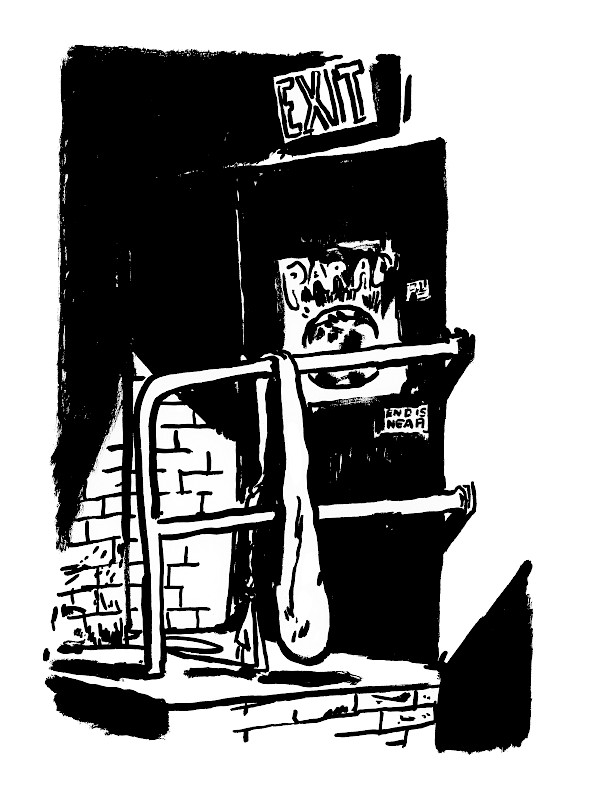
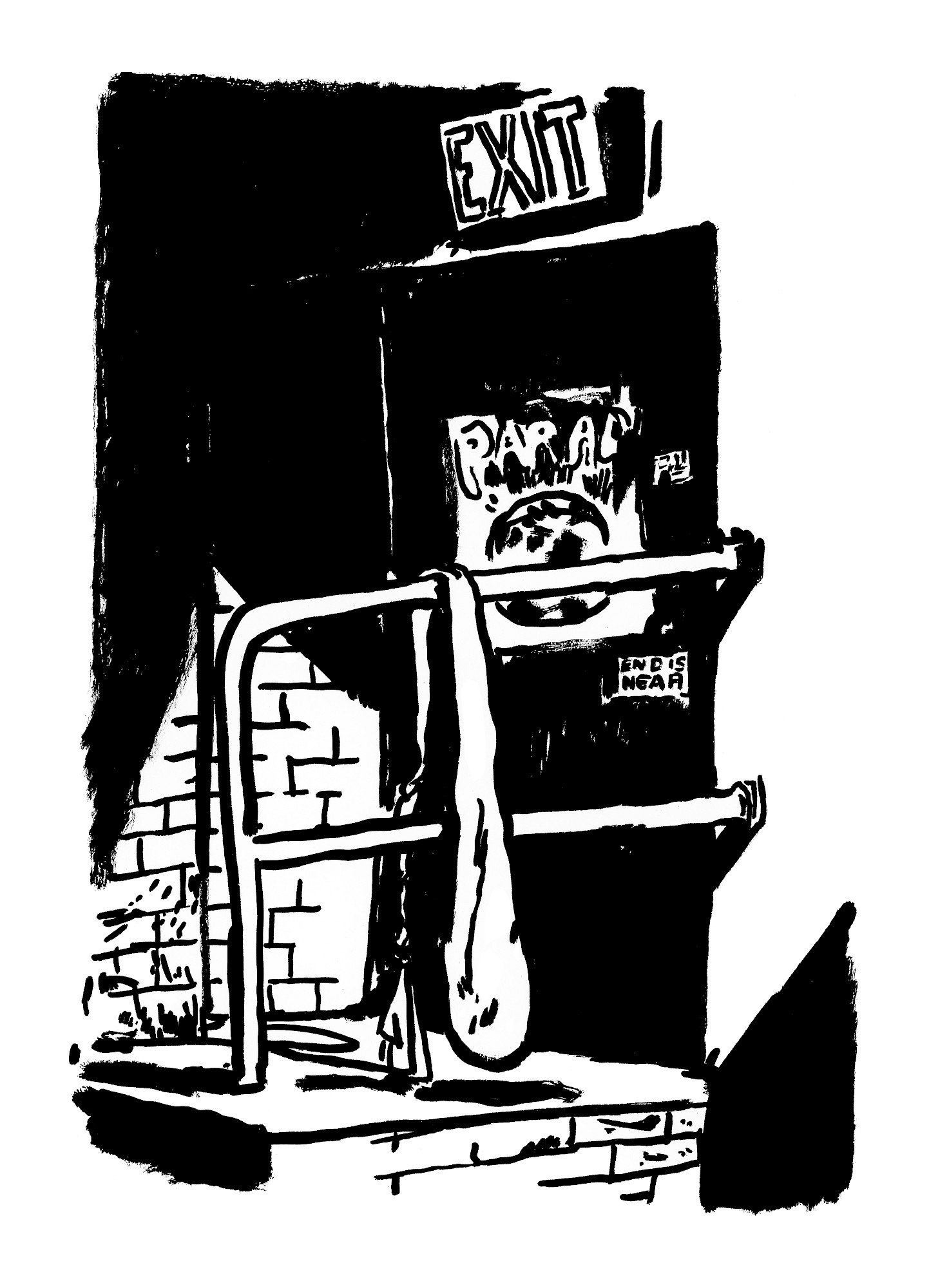
2017. A filmmaker called Nathan Truesdell cuts the archival footage of Balloonfest ‘85 into a short documentary that gets featured in the Atlantic: “When the balloons are first released, they form a mass of colorful orbs that wraps around Cleveland’s Terminal Tower, by turns resembling a meteorological phenomenon, a mushroom cloud, and a locust infestation”, the editor writes as an introduction [7]. We hear local news anchors Big Chuck and Little John yell “we did it!”, as the colours of the balloons blend into an indefinable brown.
Then, a hard cut. Caused by unexpectedly cold skies, we see fully inflated balloons coming down, instead of moving up. We hear of spooked horses, traffic issues, and a closed down airport. Lake Erie is covered in balloons, impending a Coast Guard search-and-rescue mission for two missing fishermen. The search party later describes the lake as an asteroid field, a moonscape. The balloons were supposed to deflate and disintegrate in a far away land (read: Canada). Instead, they came back like boomerangs, suffocating the city that had set them free.
2024. Watching the Balloonfest ‘86 documentary on repeat, a news notification pops up in the top corner right of my screen. “Still no end to Korean ‘balloon war’: balloons with waste sent to South Korea once more”, it says. I click. I read how hundreds of balloons filled with trash—cigarette butts, paper waste, animal faeces—are wafted over from Pyongyang to South Korea, in response to balloons – filled with US dollars, USBs with pop music and leaflets critical of Kim Jong-un – that had been sent over the border from the South a few days earlier. The North-Korean government called this propaganda a “provocation graver than gun and artillery fire.”
Balloons. Amidst F35s, spy satellites, and intercontinental ballistic missiles, they float over the world’s most heavily guarded borders, gently raining poop and K-pop upon the earth. ‘Twas only a balloon, they observed. Until it wasn’t. Or maybe it never was.
References
1. https://en.wikipedia.org/wiki/2023_Chinese_balloon_incident
2. NPR, ‘Rep. Jim Himes on unidentified object shootdowns’, 12-02-2023, heard on ‘All Things Considered’, https://www.npr.org/2023/02/12/1156430793/rep-jim-himes-on-unidentified-object-shootdowns
3. Emily Dickinson, The Selected Poems of Emily Dickinson (Hertfordshire: Wordsworth Poetry Library, 1994), 126.
4. Sylvia Plath, Collected Poems (London: Faber, 1992), 273.
5. Virginia Woolf on the BBC, 20 April 1937, BBC radio broadcast, United Kingdom, listened to on https://www.bbc.com/culture/article/20160324-the-only-surviving-recording-of-virginia-woolf
6. Virginia Woolf, 1882-1941. The Death of the Moth, and Other Essays. (New York : Harcourt, Brace and company, 1942)
7. https://www.theatlantic.com/video/index/562556/cleveland-balloonfest/
